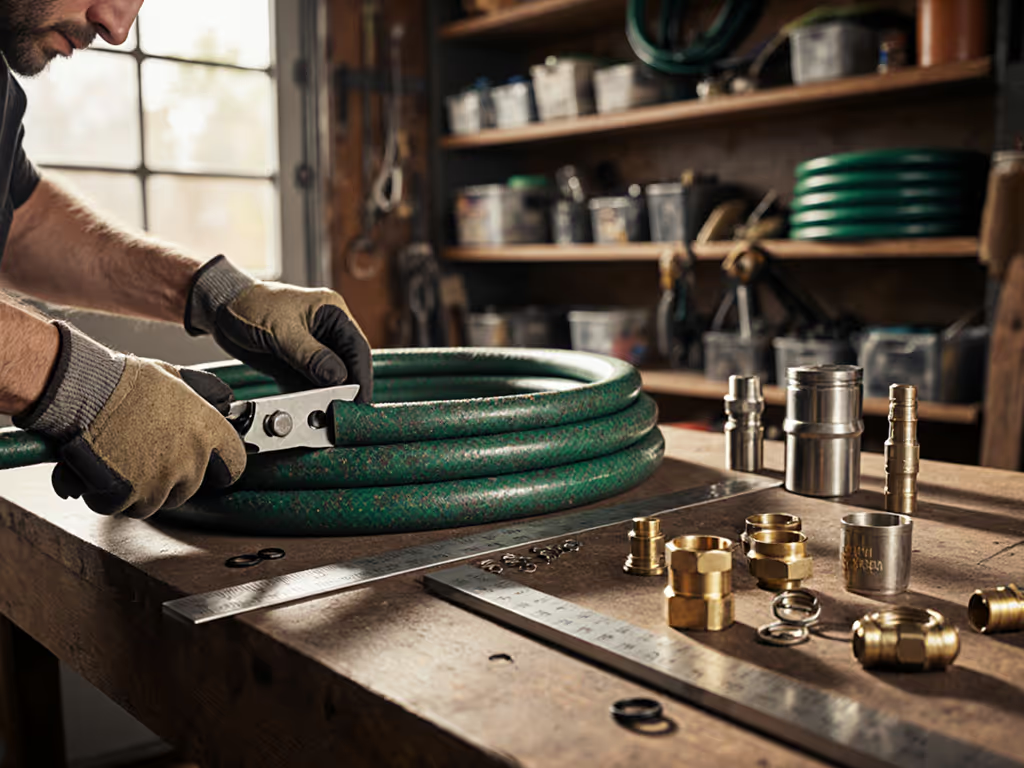
Garden Hose Pressure Regulators: Protect Plants & Save Water
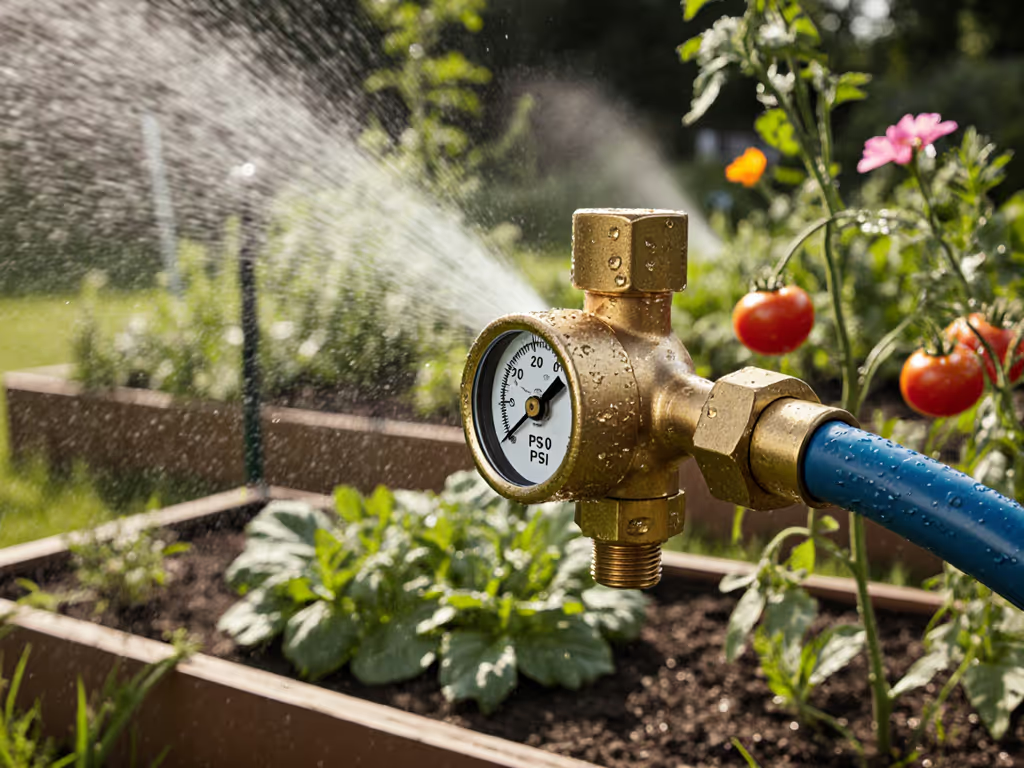
When our community garden swapped that heavy, kink-prone hose for something lighter with proper pressure management, something remarkable happened: watering became enjoyable again. Plants thrived with consistent moisture, nobody strained their wrists, and our water bill dropped noticeably. This transformation started with one simple component (the garden hose pressure regulator) that created effective water pressure control for garden systems of all sizes. Comfort and safety aren't accessories; they're the foundation of sustainable gardening that actually gets used. In this step-by-step guide, I'll show you how the right pressure regulator not only protects your plants but helps you conserve water while making watering feel effortless.
Why Proper Pressure Matters for Your Garden
Many gardeners don't realize that household water pressure (typically 40-80 PSI) is far too high for most garden applications. For a deeper dive into matching hose capabilities to pressure, see our PSI ratings comparison. When water gushes from your hose at full pressure, you're facing three critical problems:
- Plant damage from water blasting delicate seedlings and flowers
- Water waste as high pressure creates misting that evaporates before soaking soil
- System damage as components wear out faster from constant high-pressure surges
Consider this: drip irrigation systems operate best at 25 PSI, sprinklers generally need 30-40 PSI, and hand watering? You'll achieve better coverage with less effort at 40-50 PSI. That's why matching your system's pressure needs to what your garden actually requires isn't just technical, it is essential for creating a reliable, enjoyable watering routine that you'll actually maintain.
I've seen too many gardeners struggle with kinked hoses and wilted seedlings because they overlooked this simple principle. When edibles are involved, maintaining a proper food-safe path to the nozzle becomes even more critical (without proper pressure control, you risk pushing contaminants through your system or damaging delicate root structures with excessive force).
Understanding Pressure Regulator Types
Not all pressure regulators are created equal, and choosing the right one requires understanding your specific garden needs. Let's break down your options:
Fixed vs. Adjustable Models
Fixed pressure regulators come preset to deliver a specific pressure output (typically 20, 25, or 30 PSI). These are ideal for:
- Drip irrigation systems requiring consistent low pressure
- Gardeners who want a simple install-and-forget solution
- Budget-conscious buyers who don't need pressure flexibility
Adjustable pressure regulators allow you to fine-tune output pressure according to different needs. These work best for:
- Gardeners with multiple watering applications (drip, sprinklers, hand-watering)
- Those with varying water pressure throughout the day
- Gardeners who want to experiment with different pressure settings for optimal plant growth
Comfort and safety are features, not accessories or afterthoughts. The right pressure regulator makes your entire watering experience more comfortable while protecting your plants from accidental damage.
Thread Compatibility Matters
One of the most frustrating issues gardeners face is mismatched connections. Pressure regulators come in various thread types:
- FHT/MHT (Female/Male Hose Thread): Standard for garden hoses (3/4")
- NPT (National Pipe Thread): Common for spigots and irrigation components
- MPT/FPT (Male/Female Pipe Thread): Used in more permanent irrigation setups
Before purchasing, check both your spigot connection and the threads on your hose or irrigation system. A mismatched regulator won't seal properly, causing leaks and rendering your pressure control useless. If you're unsure, measure your spigot threads or take a photo to a hardware store for comparison.
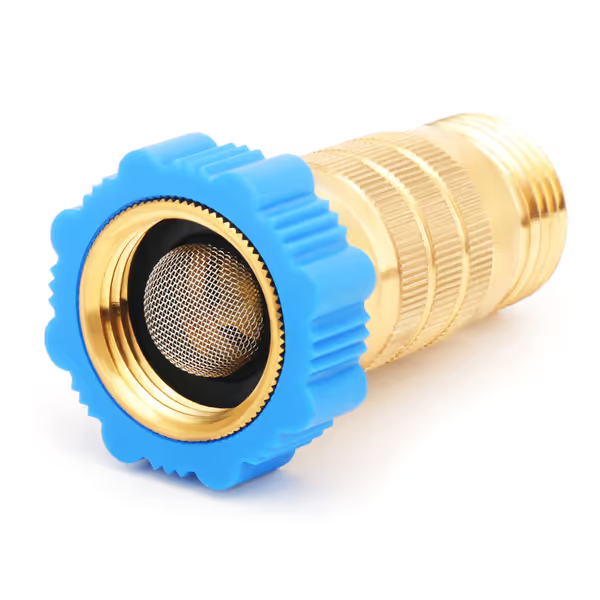
RV Hi-Flow Water Pressure Regulator
Choosing Your Ideal Pressure Regulator: A Step-by-Step Guide
Let's walk through selecting the perfect pressure regulator for your garden using my community garden-tested approach:
Step 1: Assess Your Watering Needs
Make a simple chart of your garden areas and their best pressure ranges:
| Area/Application | Ideal PSI | Notes |
|---|---|---|
| Vegetable beds with drip irrigation | 25 PSI | Prevents emitter blowouts |
| Flower beds with soaker hoses | 30 PSI | Ensures even saturation |
| Lawn sprinklers | 40-50 PSI | Maintains proper spray pattern |
| General hand-watering | 40-50 PSI | Better control with less fatigue |
If you primarily use drip irrigation, look for a dedicated drip irrigation pressure control device set to 25 PSI. For mixed-use gardens, an adjustable model gives you the flexibility to switch between applications.
Step 2: Test Your Current Water Pressure
You don't need expensive equipment to check your baseline pressure. Here's my simple test:
- Attach a basic pressure gauge (available at hardware stores for $5-10)
- Turn on your spigot fully with no attachments
- Record the PSI reading
If your pressure exceeds 60 PSI, you definitely need a regulator. Most garden systems perform best between 25-50 PSI depending on application.
Step 3: Match Regulator to Your Flow Needs
Consider your garden's water demands: If hose diameter is your limiting factor, our 1/2 inch vs 5/8 inch flow rate comparison shows how size impacts pressure and GPM.
- Small gardens/patios: 2-5 GPM regulators suffice
- Medium yards: Look for 5-10 GPM capacity
- Larger properties: Choose 10+ GPM models
Don't be fooled by "high-flow" claims, because many regulators reduce flow significantly. Check manufacturer specifications for actual flow rates at your target pressure. For a true low-flow garden setup, you want a regulator that maintains consistent pressure without choking your water volume.
Step 4: Verify Pressure Regulator Compatibility
This is where many gardeners get tripped up. Check:
- Inlet connection matches your spigot (hose thread or pipe thread)
- Outlet connection matches your hose or irrigation system
- Flow rate meets your garden's needs
- Pressure setting aligns with your watering applications
Pro tip: If you're using a reel, install the regulator between spigot and reel (not after the reel). For storage that protects fittings and prevents kinks, see our weatherproof hose reel picks. This protects both your reel mechanism and downstream components from pressure spikes.
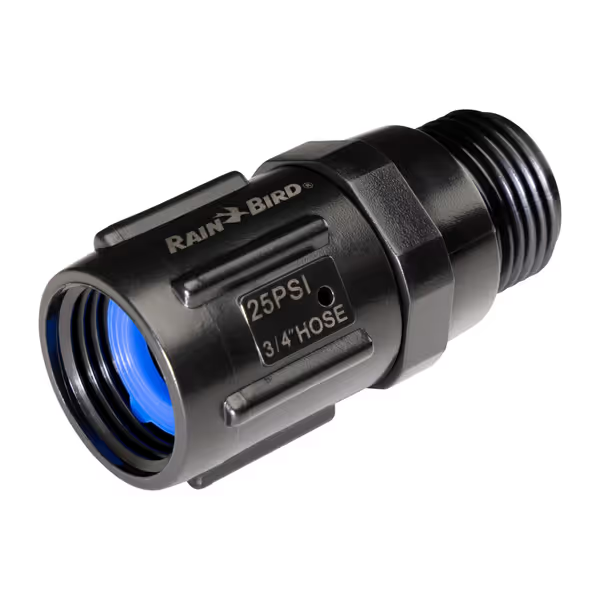
Rain Bird 25 PSI Pressure Regulator
Installation Made Simple
Now that you've selected your regulator, let's get it working properly:
Basic Installation Steps
- Turn off water at the spigot
- Hand-tighten the regulator onto your spigot (don't use tools, overtightening cracks plastic components)
- Attach your hose or irrigation system to the regulator outlet
- Turn on water slowly to check for leaks
- Test pressure with your gauge to verify proper operation
Troubleshooting Common Issues
- Leaks at connections: Check thread compatibility; replace worn washers
- Inconsistent pressure: Clean inlet screen filter; may be clogged
- No pressure reduction: Verify regulator is installed with correct orientation (inlet toward spigot)
- Water hammer noises: Install regulator closer to spigot; add a small air chamber
Many gardeners report success with the CircleCord regulator for general hose use. It handles the transition from household pressure to garden-friendly flow with minimal fuss. For dedicated drip systems, the Rain Bird 25 PSI model provides reliable, consistent pressure that keeps emitters from blowing out. Remember that even the best regulators need periodic maintenance (clean screens and check for leaks each season). Use our year-round hose maintenance guide for step-by-step storage and troubleshooting tips.
Beyond Protection: How Regulators Save Water and Boost Plant Health
A properly matched garden hose pressure regulator does more than protect your system, it transforms your watering efficiency. When I installed pressure regulators throughout our community garden, we saw measurable improvements:
- 25% reduction in water usage as misting and runoff decreased
- Healthier root development with consistent, gentle watering
- Less time spent watering as controlled pressure provided better coverage
- Extended equipment life as components weren't stressed by pressure surges
For edible gardens, this pressure control creates a more reliable food-safe path to the nozzle by preventing contaminants from being forced through micro-cracks that high pressure might create in lower-quality components. You're not just regulating water, you are protecting your food source.
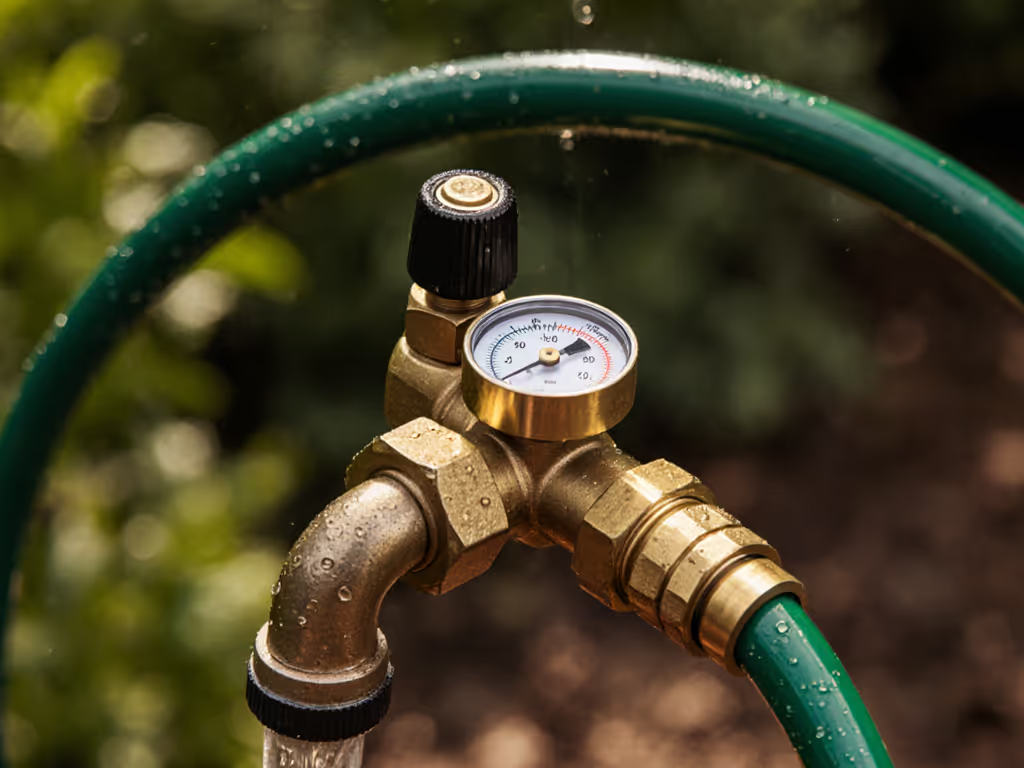
Making the Right Choice for Your Garden's Future
As gardeners, we're stewards of both our plants and our resources. The right pressure regulator isn't just another gadget, it is an investment in your garden's health, your comfort, and our shared water resources. When you can water without wrist strain, with confidence that you're neither drowning nor under-watering your plants, you've created a system that will be used consistently and correctly.
I've seen how the right pressure management transforms gardening from a chore into a pleasure. When elders at our community garden can water without straining, when kids can handle the hose without getting drenched, and when every drop counts toward healthier plants, that is when gardening becomes sustainable in every sense.
Remember my core belief: If it's comfortable and safe, people use it right, longer. A well-chosen garden hose pressure regulator creates that comfort and safety, protecting your plants while making water conservation effortless. Isn't that the kind of gardening we all want to do?
Ready to explore further? Check our recommended resources for calculating your garden's specific water needs, or download our pressure testing worksheet to determine exactly what your system requires before purchasing. Your plants and your water bill will thank you.


